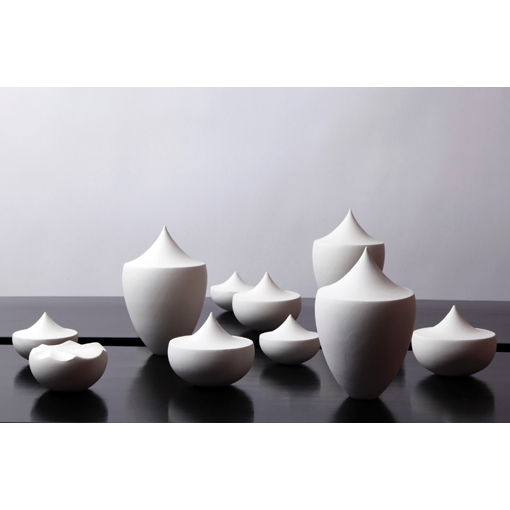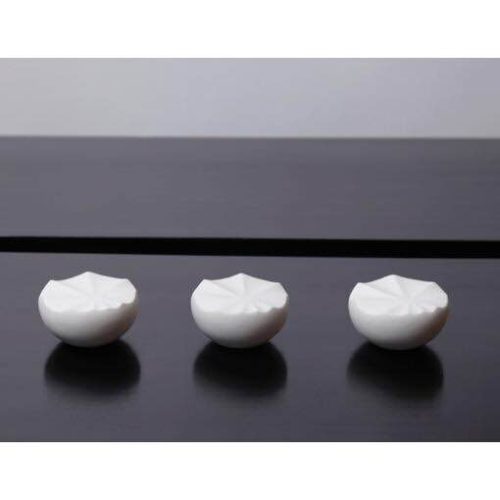“I have a sensitivity to the small moments and the nuances of life,” writes Moscow-born, Tel Aviv-based ceramicist Yulia Tsukerman.

“Photography was one of my first passions. I used to wander around Moscow for hours, searching for those fleeting expressions of the city landscape when all elements are suddenly arranged into the only possible most perfect moment. Finding and capturing these moments was the greatest experience…”
 “When working with clay I look for the same perfect moment of beauty. However, working in this medium, I build these moments for myself rather than waiting for them to present themselves to me. In the process of developing the objects I try to eliminate anything unnecessary. I look for a type of balance and tension in form, one that is expressed with a single gesture.”
“When working with clay I look for the same perfect moment of beauty. However, working in this medium, I build these moments for myself rather than waiting for them to present themselves to me. In the process of developing the objects I try to eliminate anything unnecessary. I look for a type of balance and tension in form, one that is expressed with a single gesture.”
Perhaps it is this quality of searching for and building a perfect moment that drew us to Yulia’s work initially. It is essentially what we do with our collection of art and design. Again and again, we find ourselves creating installations that fulfill our need for stillness and equipoise in beauty.We also share a love of some of the same artists. Yulia’s “Vanitas” series (including the forms pictured above) was inspired in part by the work of some of the great still life painters, including Jean-Baptiste Chardin, Juan Sánchez Cotán, and Giorgio Morandi. Vanitas “is an attempt to convey a feeling of harmony, silence, and serenity through form…It presents a world of objects that are an abstraction of something familiar and real.” Among her favorite sculptors are Brancusi–in whom “I find a guiding conciseness and density,” Noguchi–who offers “appealing dynamics,” and Cy Twombly “for [the sculptures’] fragility and ephemerality.”
“We will turn the whole world into a flower garden” is a different project. This sculpture, a group of seven wheels of different sizes, is named after one of the embodying slogans of the Russian Revolution.
It is the artist’s personal and emotional interpretation of this turning point in Russian history. It “encompasses both stirring attraction and fear,” she writes. “The mass of grey wheels embodies the act of moving forward, yet simultaneously tramples everything in its path. Those may be the wheels of the train, streaming through the largest country in the world carving a pillar of destruction in its wake, or it may be the gears of an industrial revolution; creating progress and stimulating growth.” For all their modernity and velocity, they seem to us to reach back to something more elemental and ancient. Whether or not the artist intends it, perhaps they are also the fossil remains of revolution.
We are honored to be introducing Yulia Tsukerman’s work to a New York audience. These and other works can be seen in our showroom at the New York Design Center. For prices and additional information, click on the images above.




